Following a highly successful 1969 that saw four Apollo missions including the first human Moon landing, 1970 began on a less rosy note. On Jan. 4, NASA Administrator Thomas O. Paine announced the cancellation of the final Moon landing mission, Apollo 20, due to reductions in the agency’s budget. The schedule for the remaining Moon landing missions would be stretched out, lengthening the interval between flights from four to six months. Scientists examining the samples returned from the Moon actually preferred the longer gaps between flights since it allowed them more time to analyze the results and better plan future missions to increase the scientific return from the program. As the first step in that rescheduling, on Jan. 7 NASA announced the delay of the launch of Apollo 13 from March 12 to April 11. The Saturn V rocket topped with the Apollo spacecraft had rolled out to Launch Pad 39A the previous December where workers began tests on the vehicle. The prime crew of Commander James A. Lovell, Command Module Pilot (CMP) Thomas K. Mattingly, and Lunar Module Pilot (LMP) Fred W. Haise, backed up by John W. Young, John L. “Jack” Swigert, and Charles M. Duke, continued to train for their 10-day mission planned to include a landing in the Fra Mauro region of the Moon.
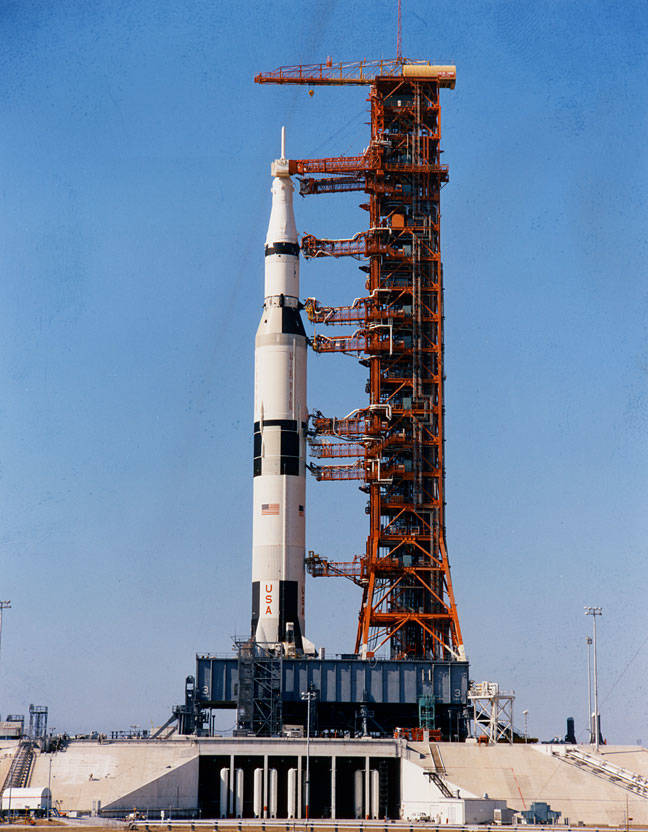
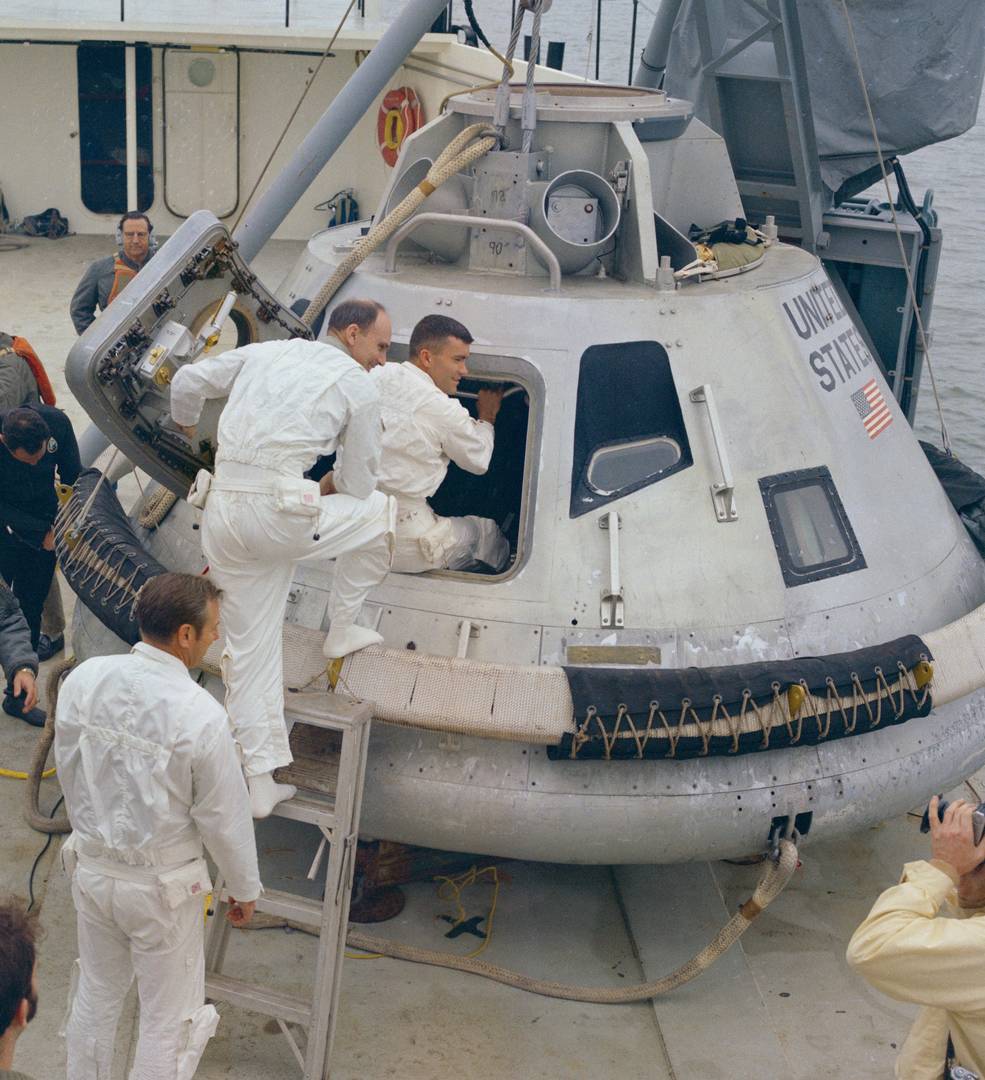
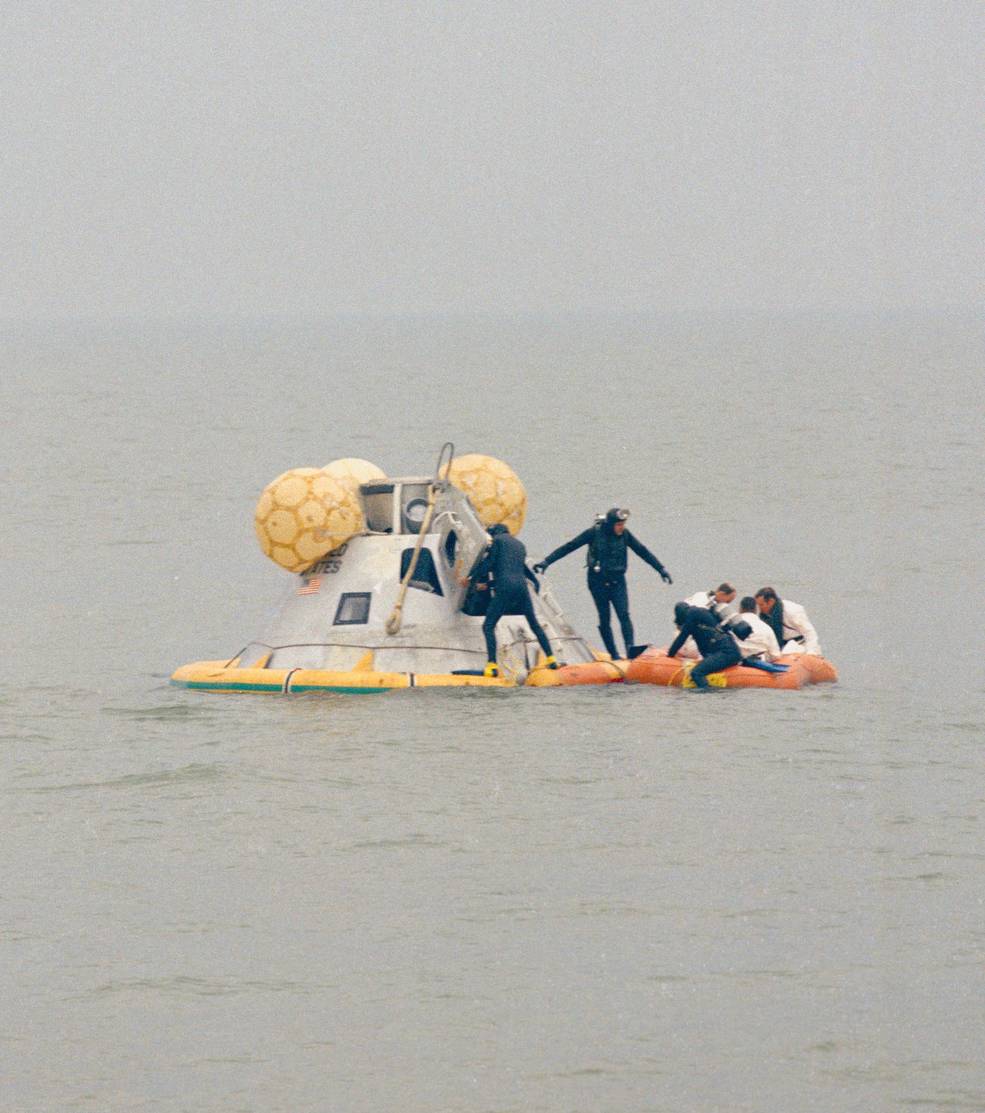
Left: Apollo 13’s Saturn V at Launch Pad 39A shortly after rollout. Middle: Aboard MV Retriever, Apollo 13 astronauts
(left to right) Lovell, Mattingly, and Haise enter the boilerplate Apollo spacecraft for the water egress training session.
Right: Apollo 13 astronauts (left to right in white flight suits) Mattingly, Haise, and Lovell in the life raft after emerging
from the boilerplate Apollo capsule.
Apollo 13 prime crewmembers Lovell, Mattingly, and Haise completed their water egress training in the Gulf of Mexico near the coast of Galveston, Texas, on Jan. 24. With support from the Motorized Vessel (MV) Retriever, the three astronauts entered a boilerplate Apollo Command Module. Sailors lowered the capsule into the water, first in the Stable 2 or apex down position. Three self-inflating balloons righted the spacecraft into the Stable 1 apex up position within a few minutes. With assistance from the recovery team, Lovell, Mattingly, and Haise exited the spacecraft onto life rafts. A helicopter lifted them out of the life rafts using Billy Pugh nets and returned them to Retriever. Later that day, the astronauts returned to the Manned Spacecraft Center (MSC), now the Johnson Space Center in Houston, to examine Moon rocks in the Lunar Receiving Laboratory (LRL) that the Apollo 12 astronauts had returned the previous November.
During their 33.5 hours on the Moon’s surface, Lovell and Haise planned to conduct two four-hour Extravehicular Activities (EVAs) or spacewalks to set up the Apollo Lunar Surface Experiment Package (ALSEP), a suite of five investigations designed to collect data about the lunar environment after the astronauts’ departure, and to conduct geologic explorations of the landing site. Mattingly planned to remain in the CSM, conducting geologic observations from lunar orbit including photographing potential future landing sites. Lovell and Haise conducted several simulations of the EVA timelines, including setting up the ALSEP equipment, practicing taking core samples, and photographing their activities for documentation purposes. They and their backups conducted practice sessions with the Partial Gravity simulator, also known as POGO, an arrangement of harnesses and servos that simulated walking in the lunar one-sixth gravity. Lovell completed several flights in the Lunar Landing Training Vehicle (LLTV) that simulated the flying characteristics of the LM for the final several hundred feet of the landing.
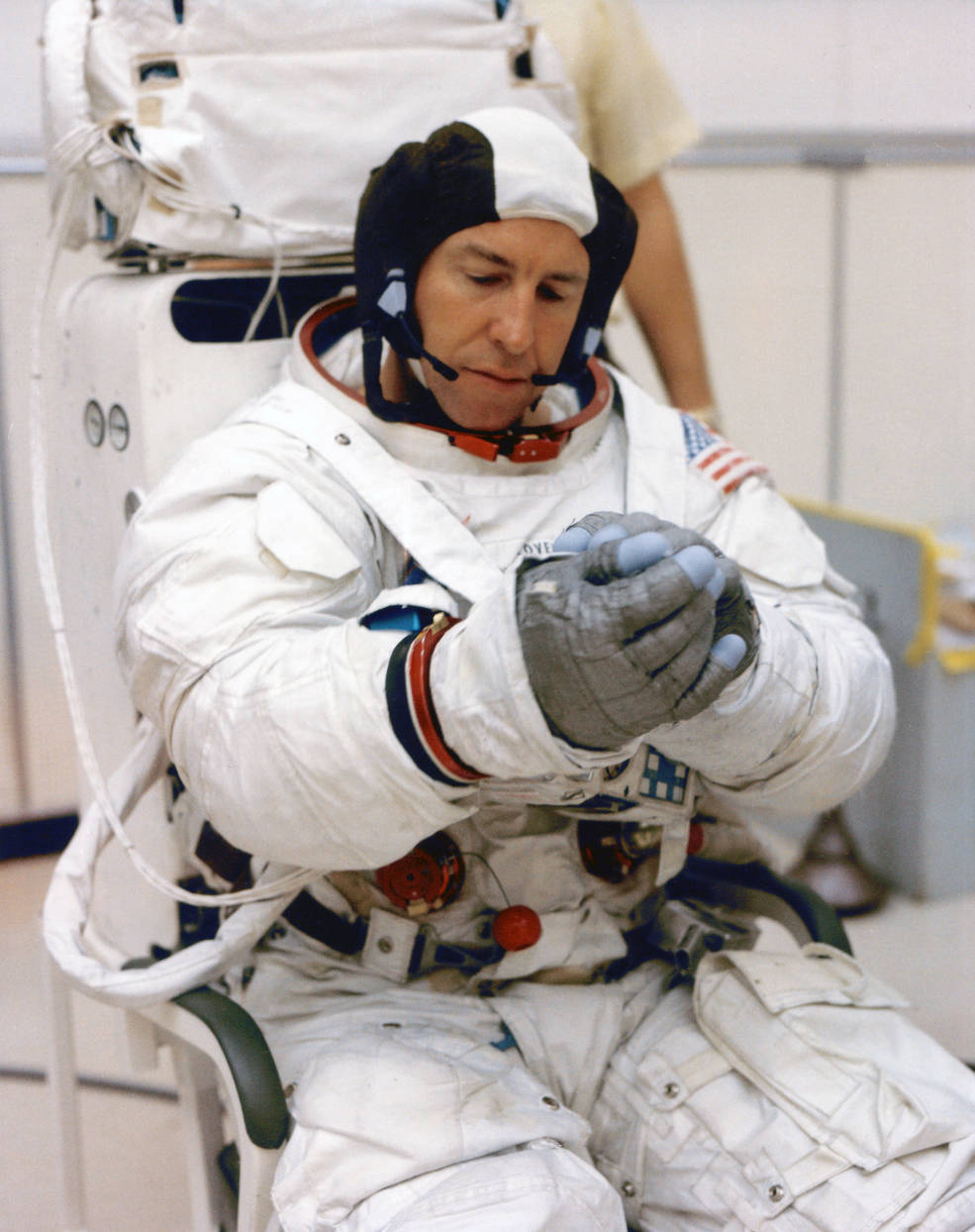
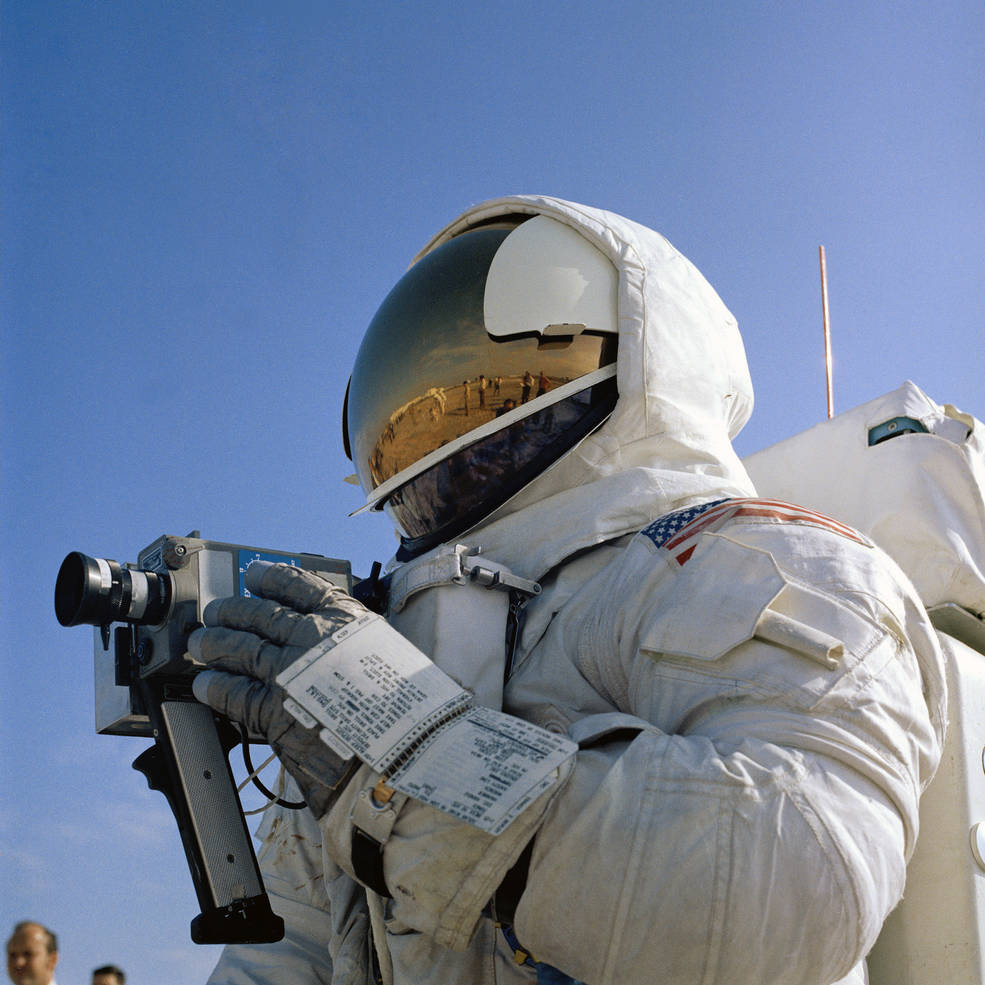
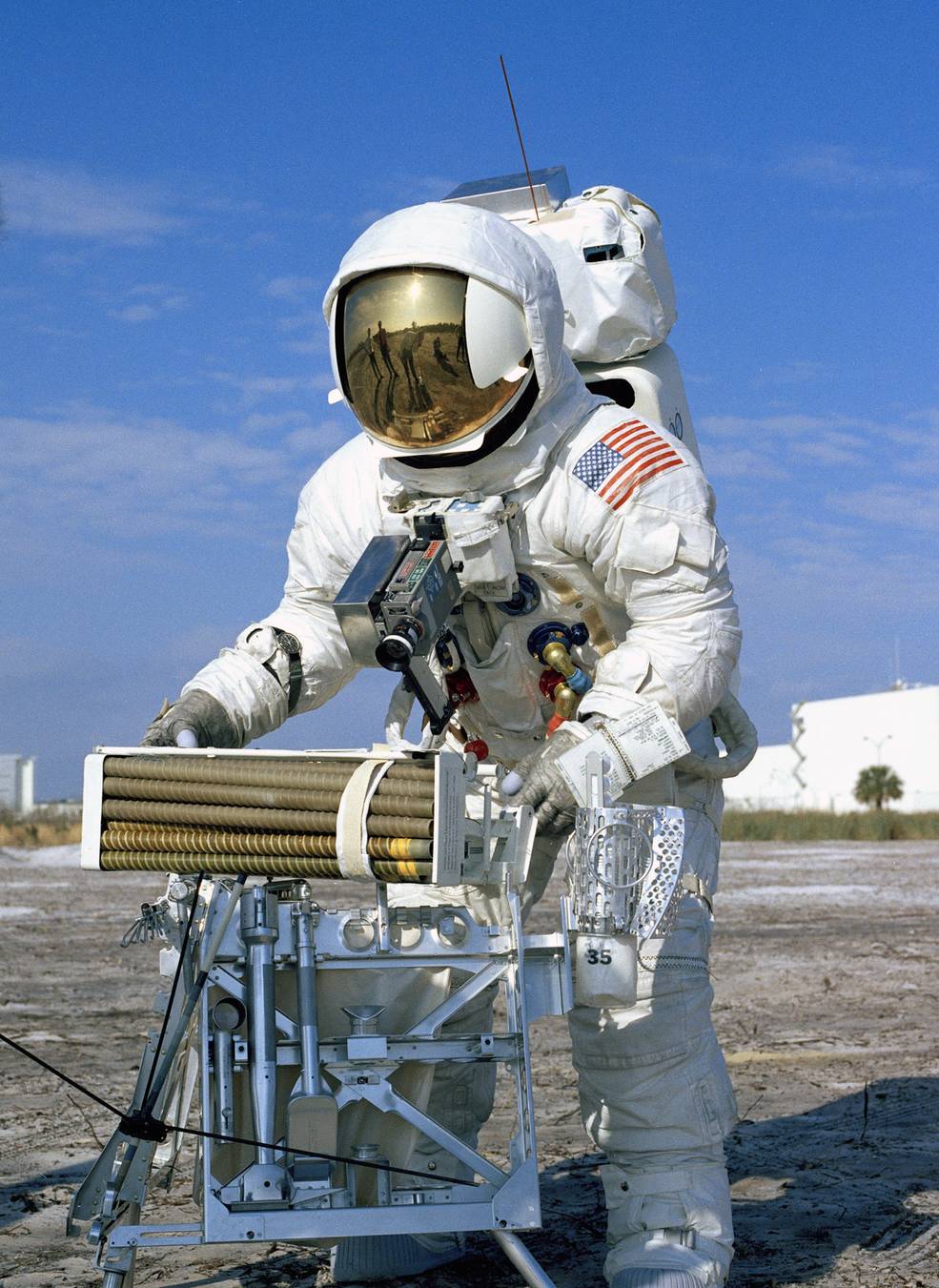
Left: Apollo 13 Commander Lovell suiting up for an EVA training session.
Middle: Apollo 13 LMP Haise practicing photography during an EVA simulation.
Right: Apollo 13 LMP Haise during EVA simulation.
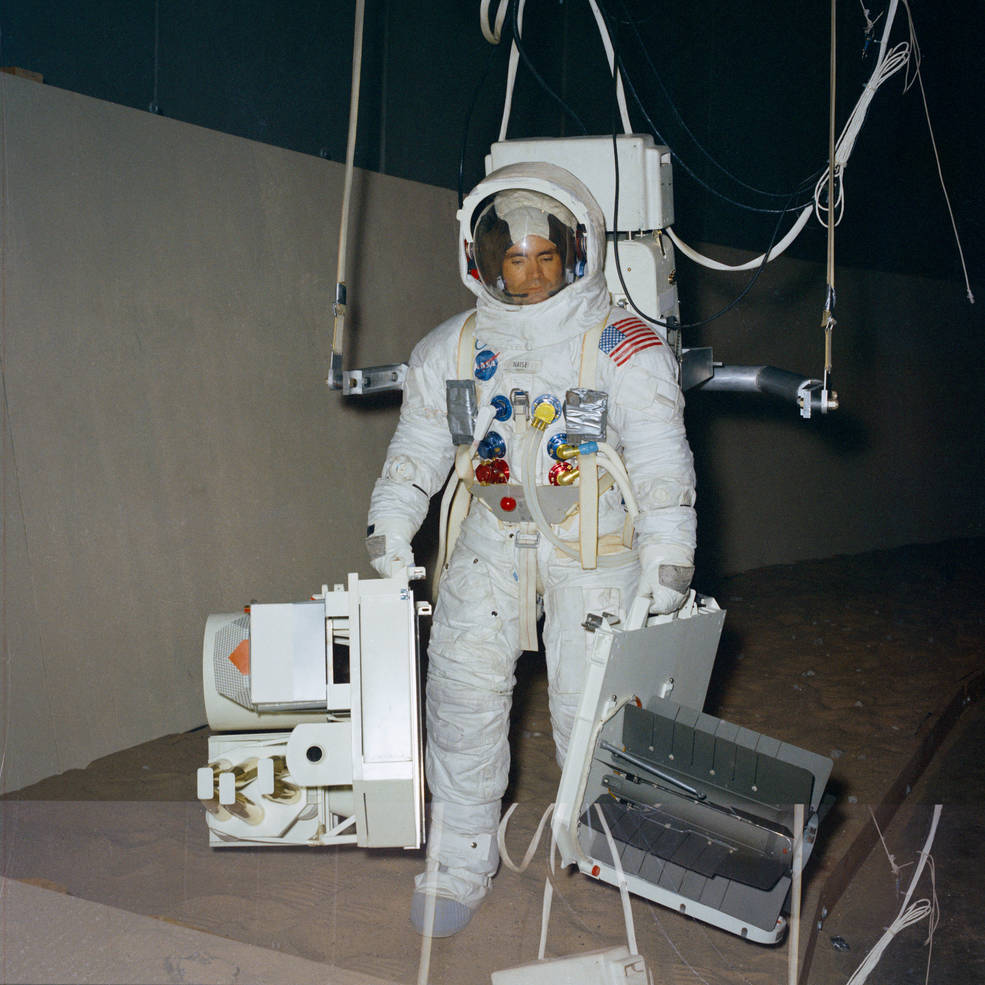
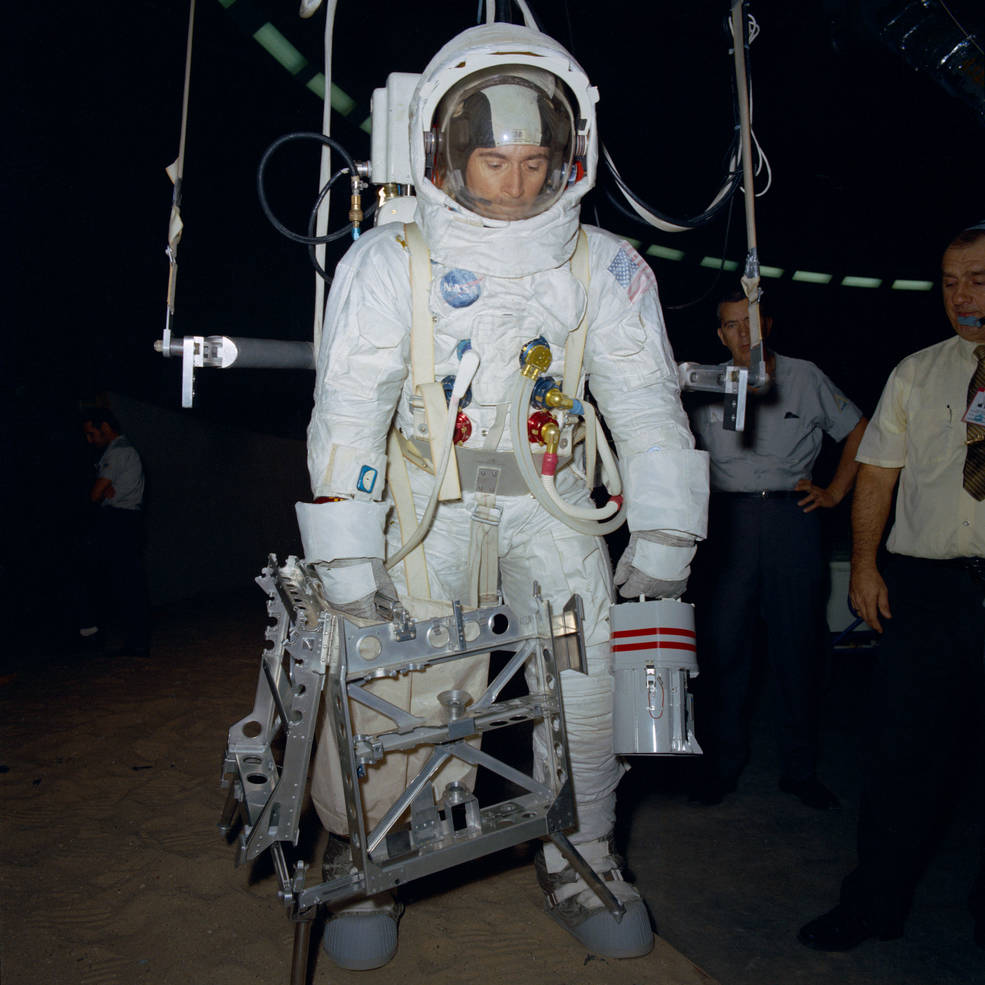
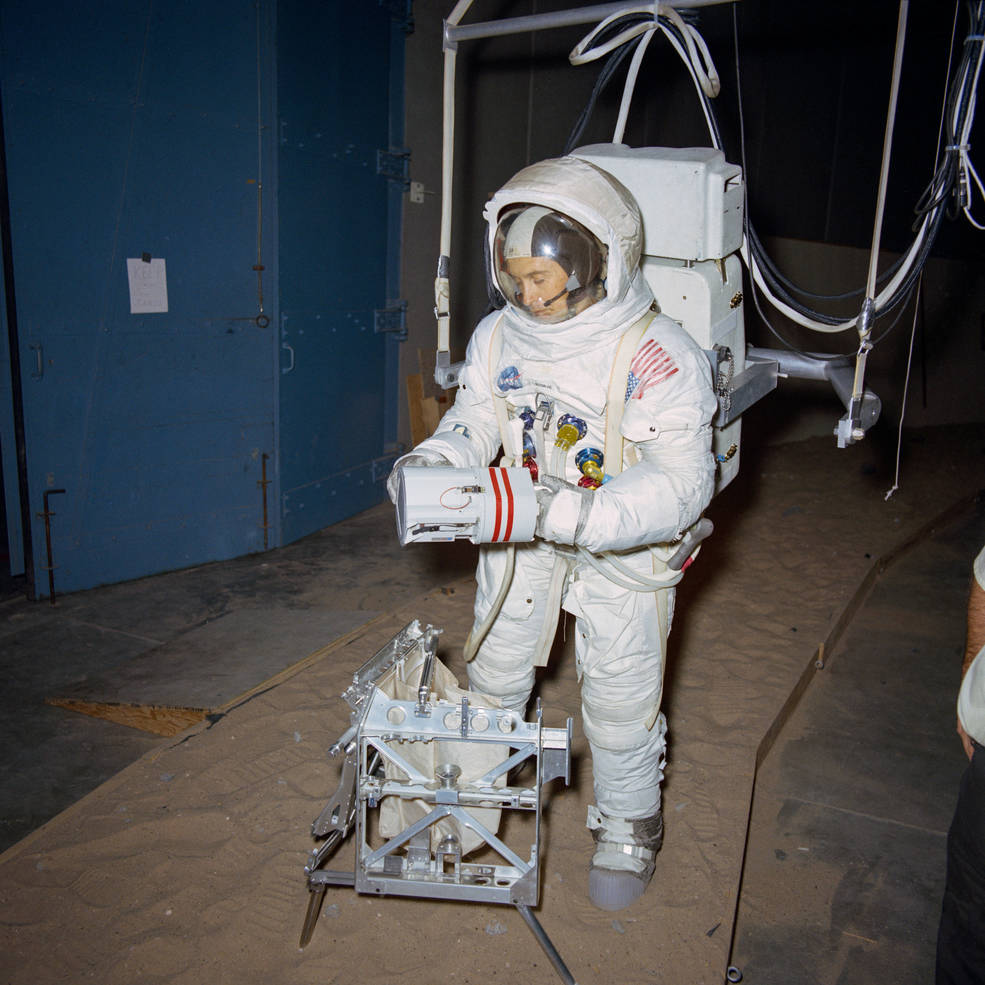
Apollo 13 astronauts practicing walking and carrying equipment in the POGO partial gravity
simulator: (left to right) Haise, Young, and Duke.
In the LRL, technicians began to prepare the Apollo Lunar Sample Return Containers (ALSRC), or rock boxes, for Apollo 13. Like all missions, Apollo 13 carried two ALSRCs, with each box and lid manufactured from a single block of aluminum. Workers placed sample containers and bags and two 2-cm core sample tubes inside the two ALSRCs. Once loaded, technicians sealed the boxes under vacuum conditions so that they would not contain pressure greater than lunar ambient conditions. Engineers at MSC prepared the American flag that Lovell and Haise planned to plant on the Moon for stowage on the LM’s forward landing strut.
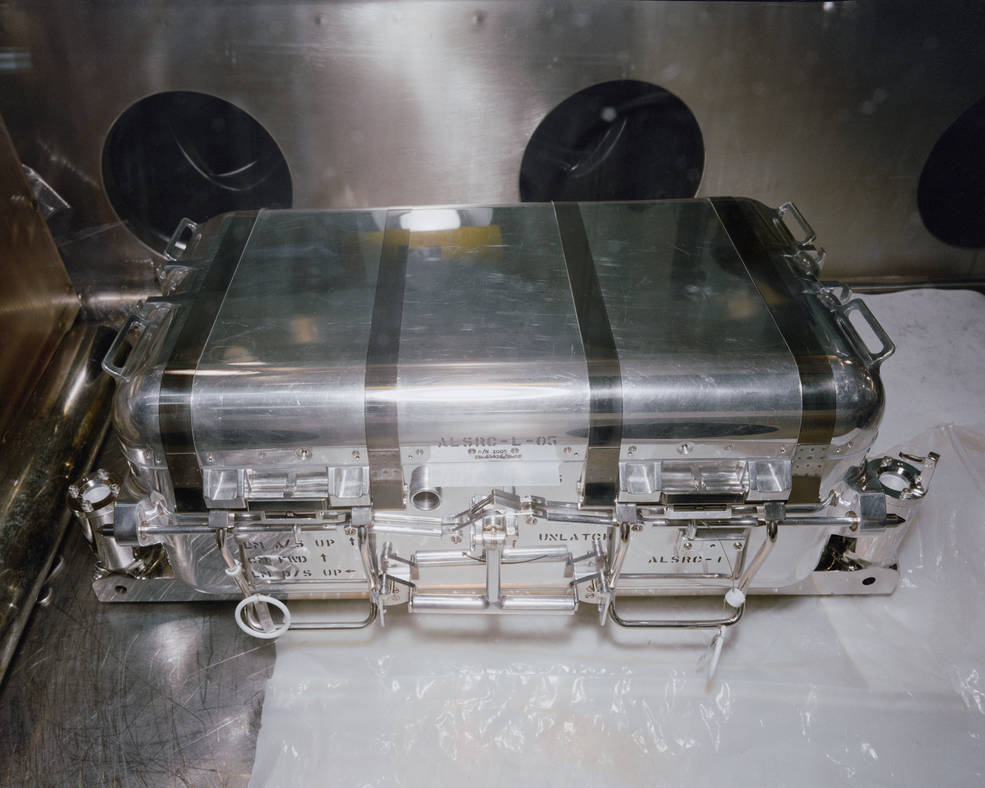
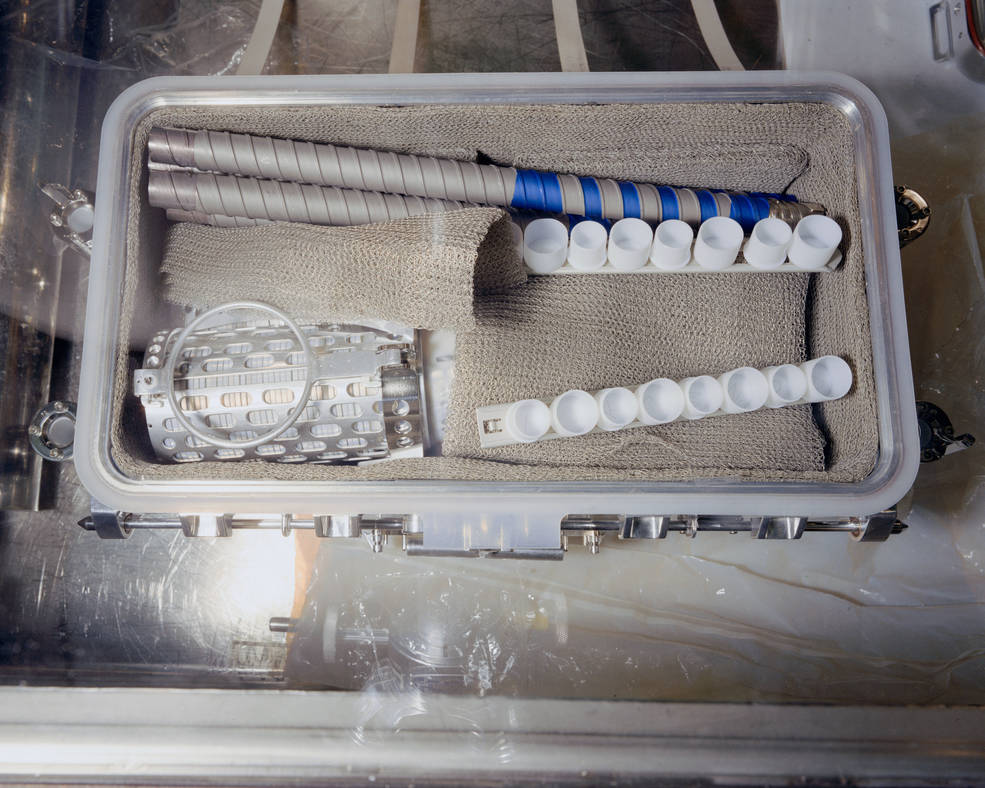
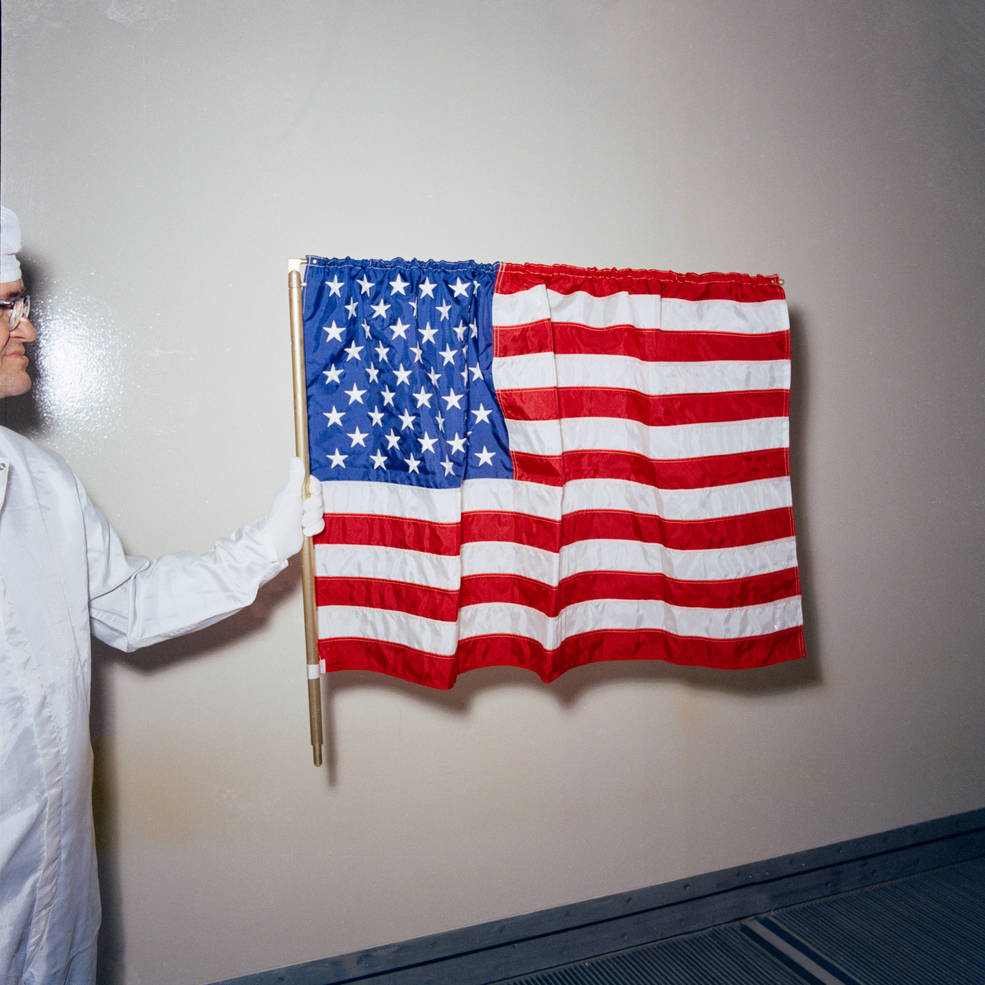
Left: Closed Apollo 13 rock box. Middle: Open rock box, partially outfitted with core sample tubes and
sample container dispenser. Right: A technician holding the American flag that flew aboard Apollo 13.
As part of the rescheduling of Moon missions, NASA delayed the launch of the next flight, Apollo 14, from July to October 1970. The Command and Service Module (CSM) and the Lunar Module (LM) had arrived at the Kennedy Space Center (KSC) late in 1969 and technicians conducted tests on the vehicles in the Manned Spacecraft Operations Building (MSOB). On Jan. 12, workers lowered the ascent stage of the LM onto the CSM to perform a docking test – the next time the two vehicles would dock they would be on the way to the Moon and the test verified that they were compatible. Workers mated the two stages of the LM on Jan. 20. The three stages of the Apollo 14 Saturn V arrived in KSC’s cavernous Vehicle Assembly Building (VAB) in mid-January and while workers stacked the first stage on its Mobile Launch Platform on Jan. 14, they delayed stacking the remainder of the rocket stages until May 1970. That decision proved fortunate, since engineers needed to modify the second stage engines following the pogo oscillations experienced during the Apollo 13 launch.
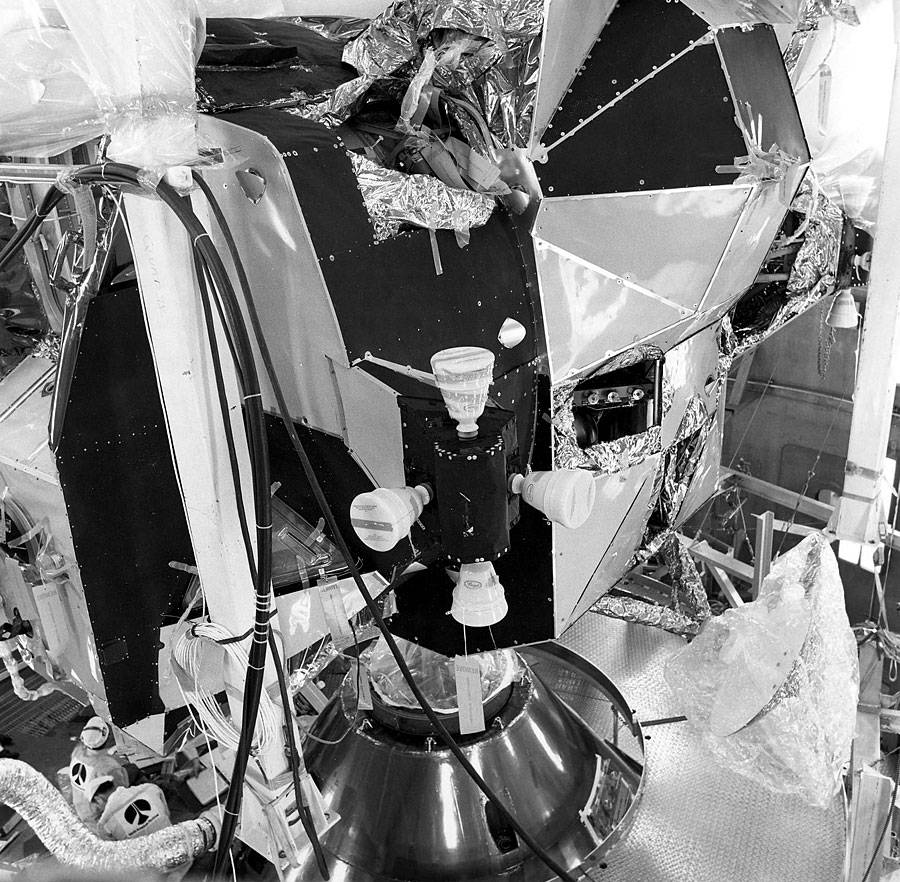
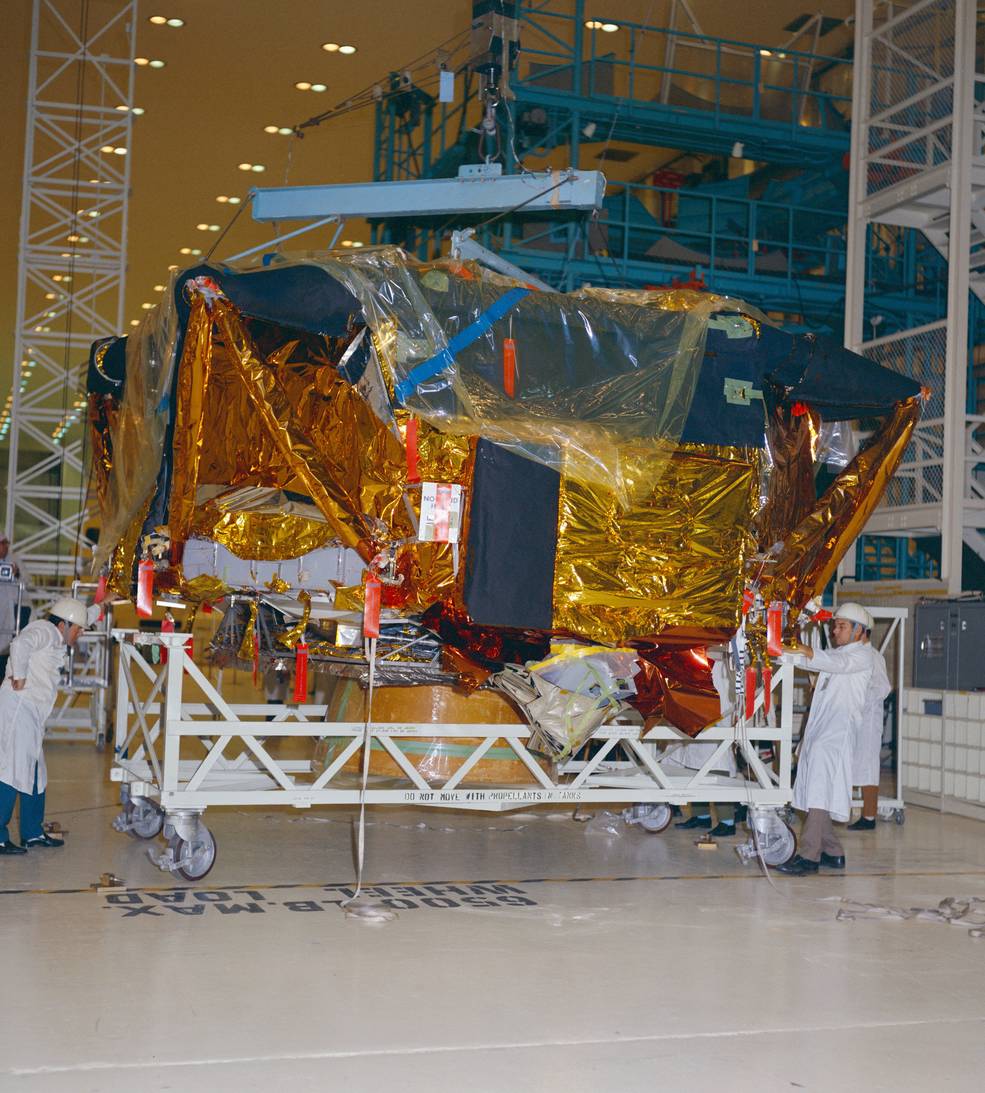
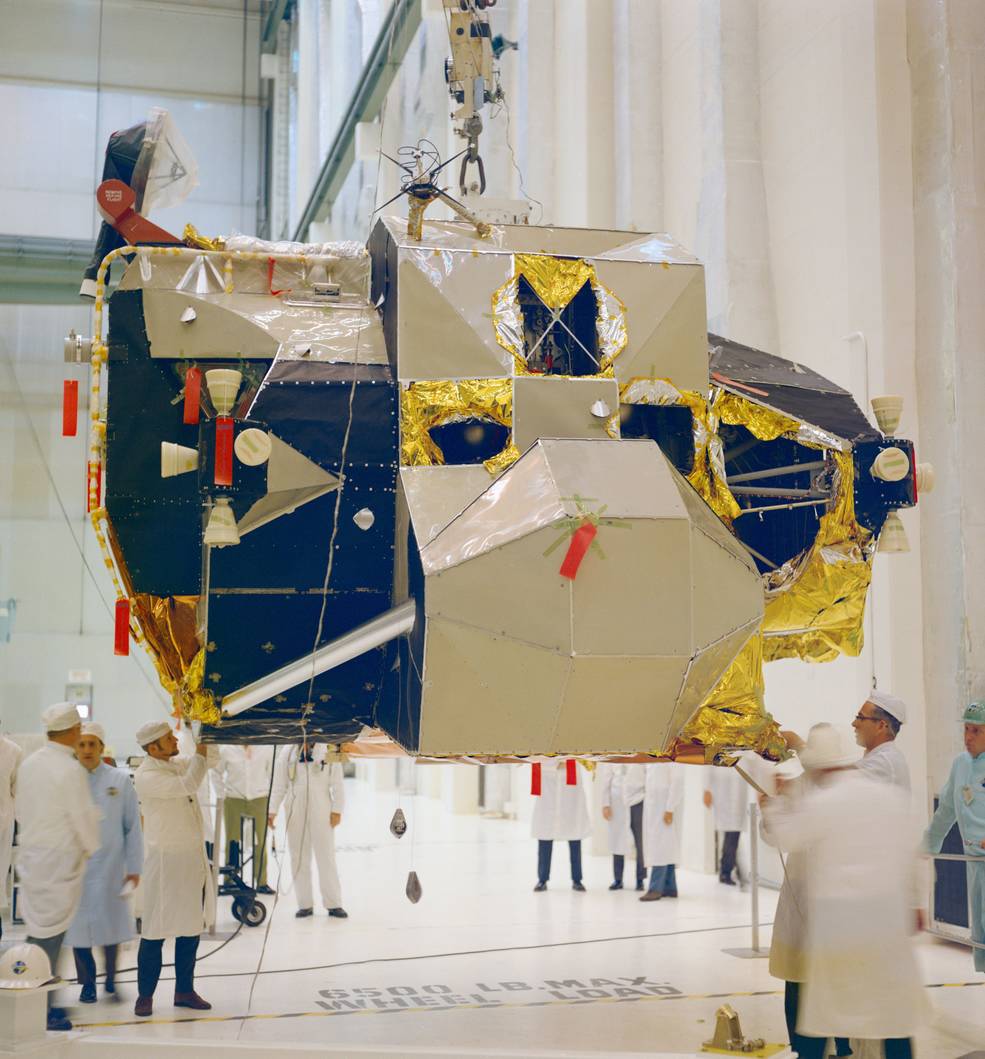
Left: Apollo 14 LM ascent stage being lowered onto the CM in a preflight docking test.
Middle: Apollo 14 LM descent stage being prepared for mating with the ascent stage.
Right: Apollo 14 LM ascent stage being prepared for mating with the descent stage.
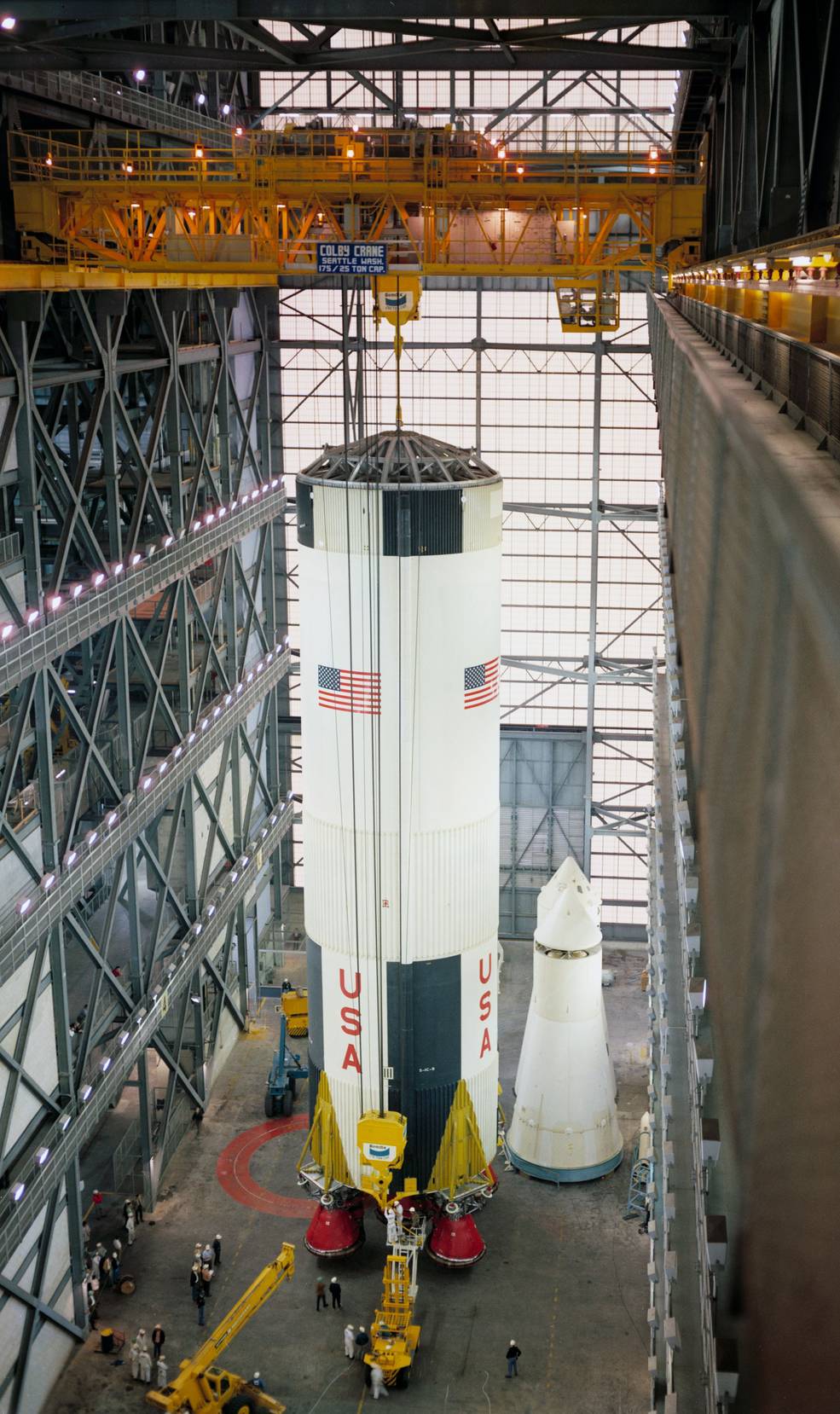
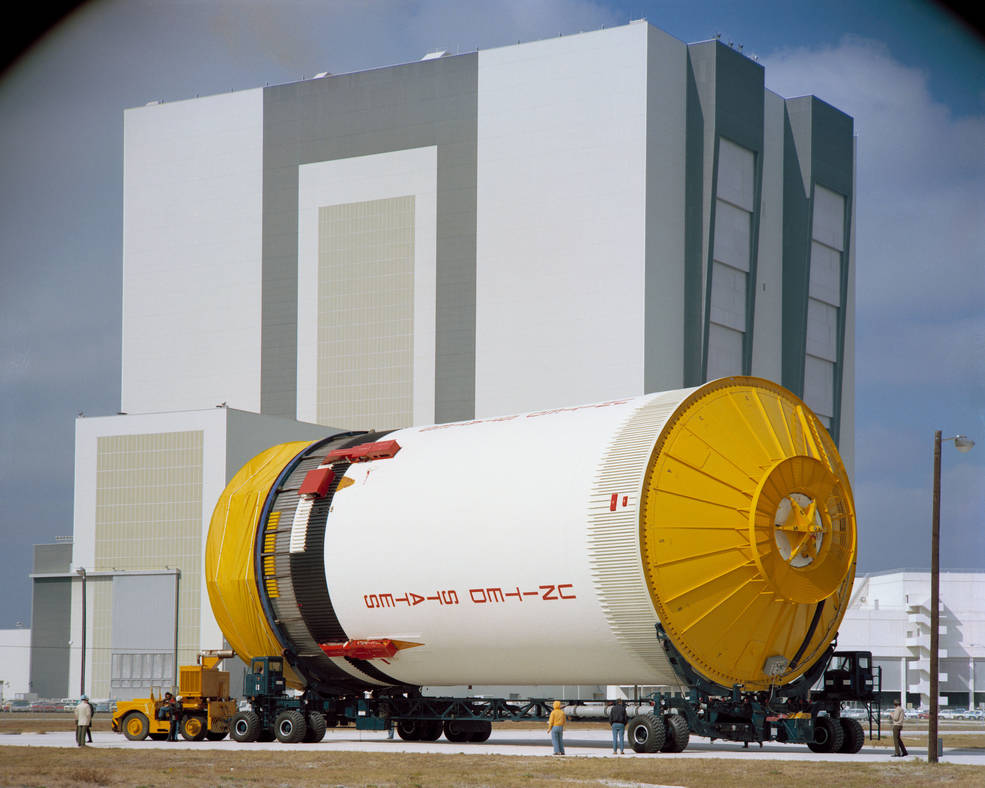
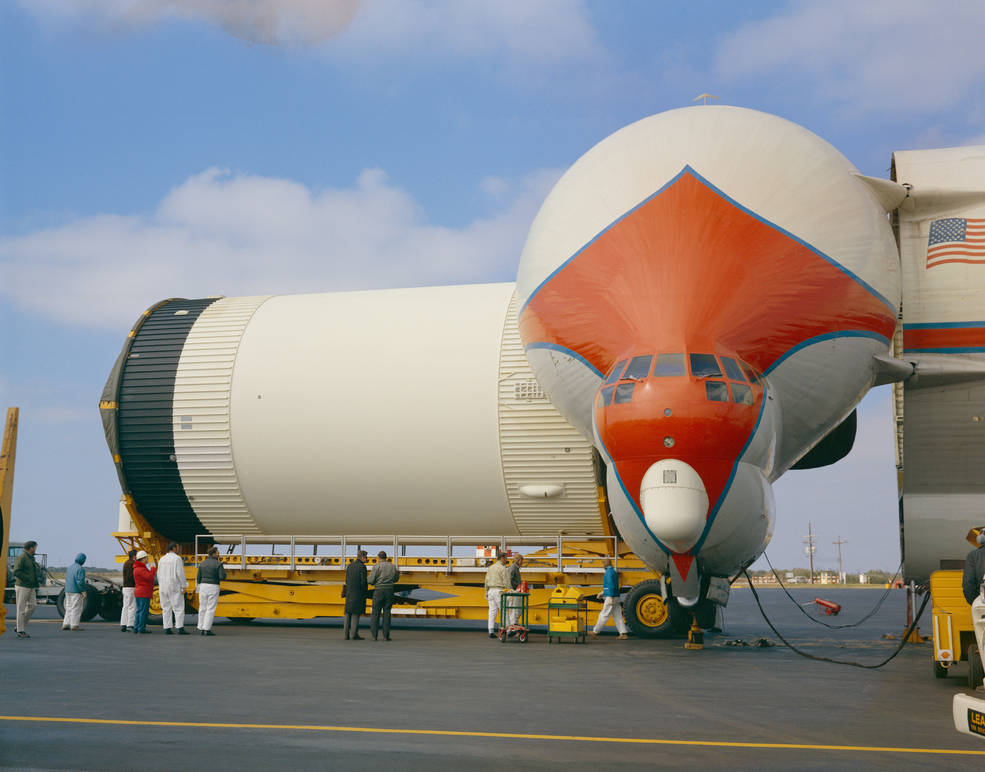
Left: First stage for Apollo 14’s Saturn V inside the VAB.
Middle: Second stage for Apollo 14’s Saturn V arriving at the VAB.
Right: Third stage for Apollo 14’s Saturn V arriving at KSC.
Apollo 14 astronauts Commander Alan B. Shepard, CMP Stuart A. Roosa, and LMP Edgar D. Mitchell and their backups Eugene A. Cernan, Ronald E. Evans, and Joe H. Engle continued training for their mission. In addition to spending time in spacecraft simulators, the prime and backup Commanders and LMPs conducted suited vacuum chamber runs in MSC’s Space Environmental Simulation Laboratory (SESL) and completed their first familiarization with deploying their suite of ALSEP investigations. The Apollo 14 astronauts were the first to make use of the Modular Equipment Transporter (MET), nicknamed the “Rickshaw” because of its appearance, a golf-cart like wheeled conveyance they used to transport their tools and collected lunar samples. A team led by project design engineer William K. Creasy developed the MET based on recommendations from the first two Moon landing crews on how to improve efficiency on the lunar surface. Creasy and his team demonstrated the MET to Sally LaMere, editor of The Roundup, MSC’s employee newsletter. Three support astronauts, William R. Pogue, Anthony W. “Tony” England, and C. Gordon Fullerton tested the MET prototype in simulated one-sixth lunar gravity during parabolic aircraft flights.
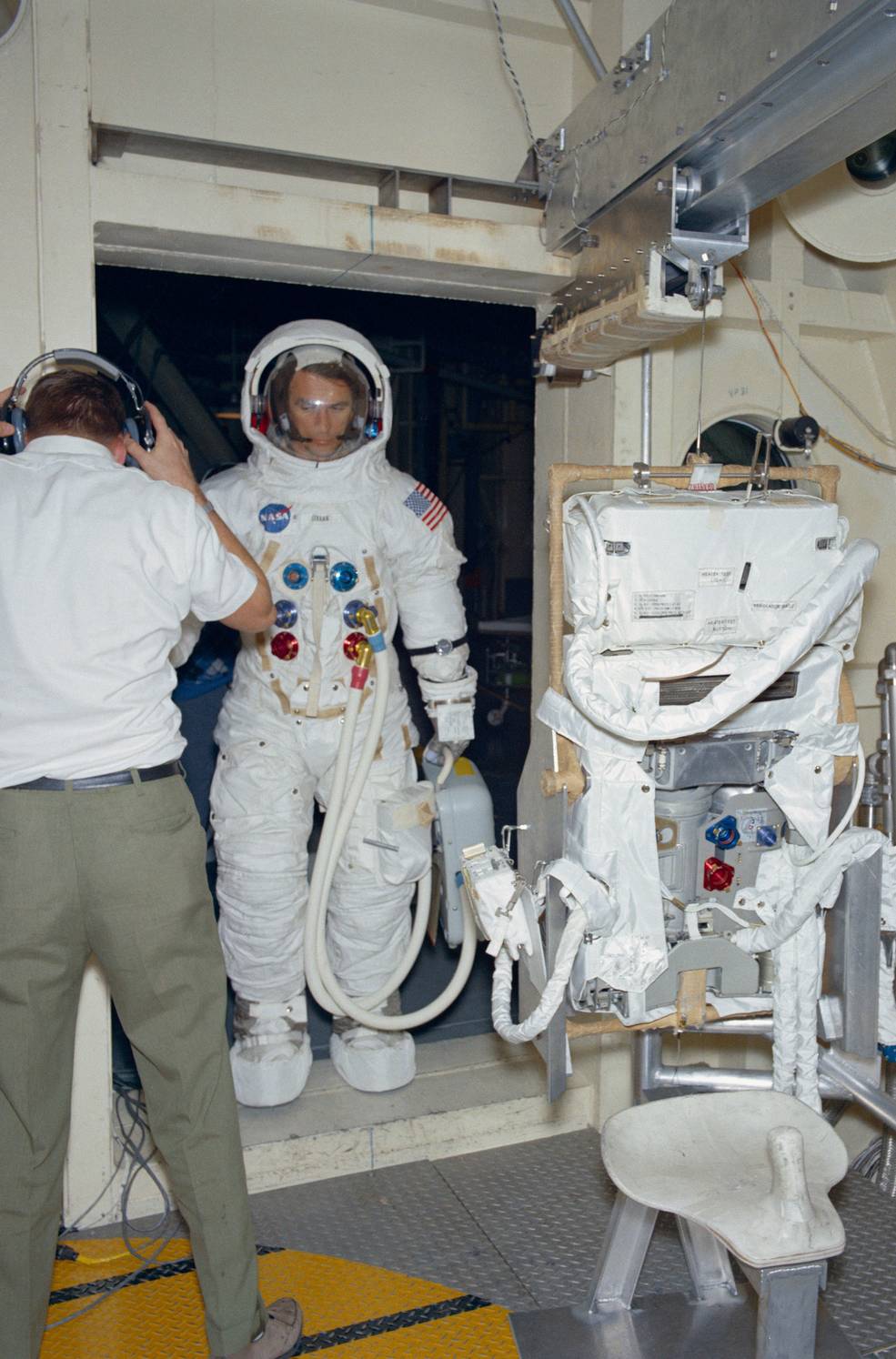
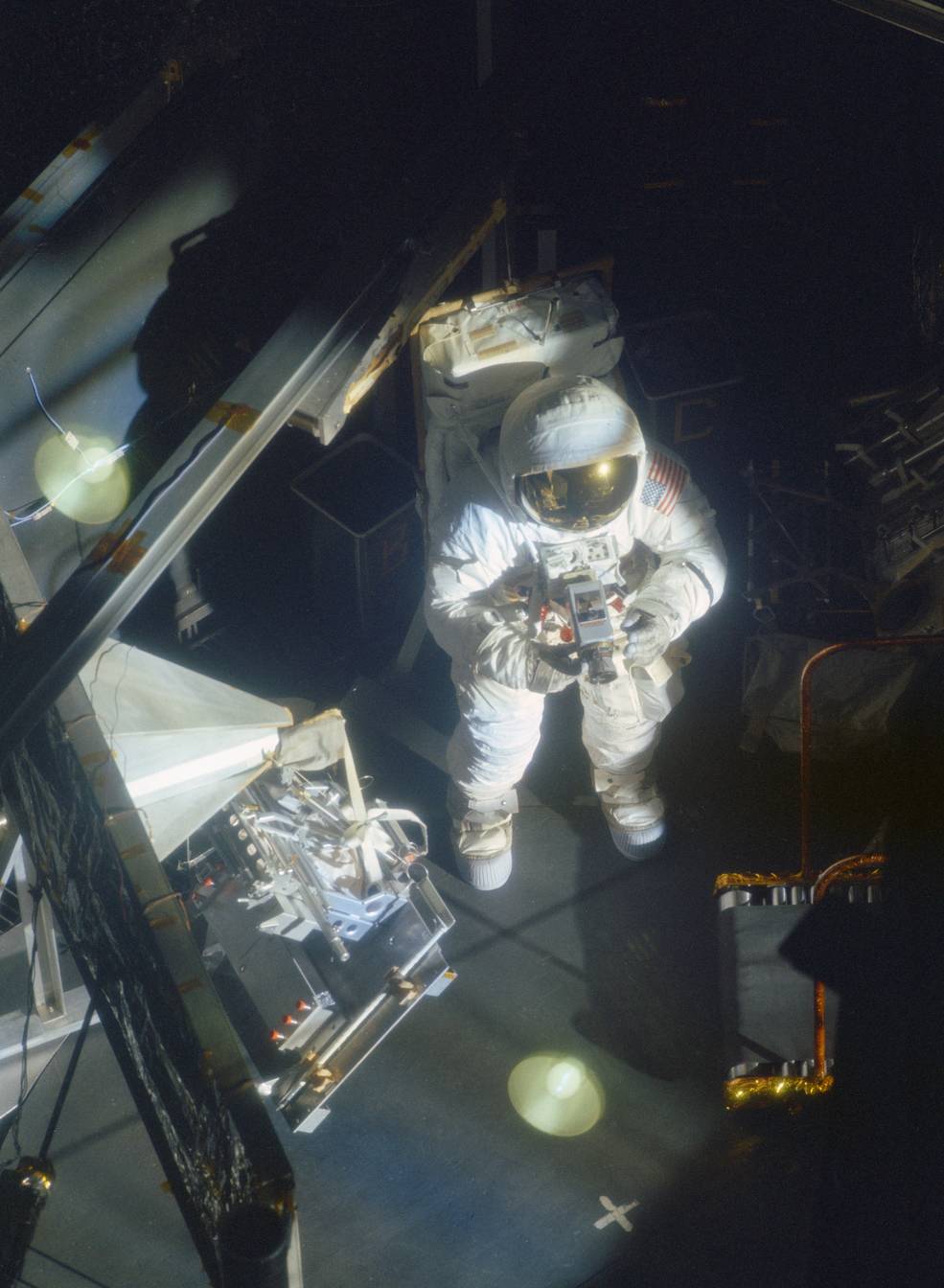
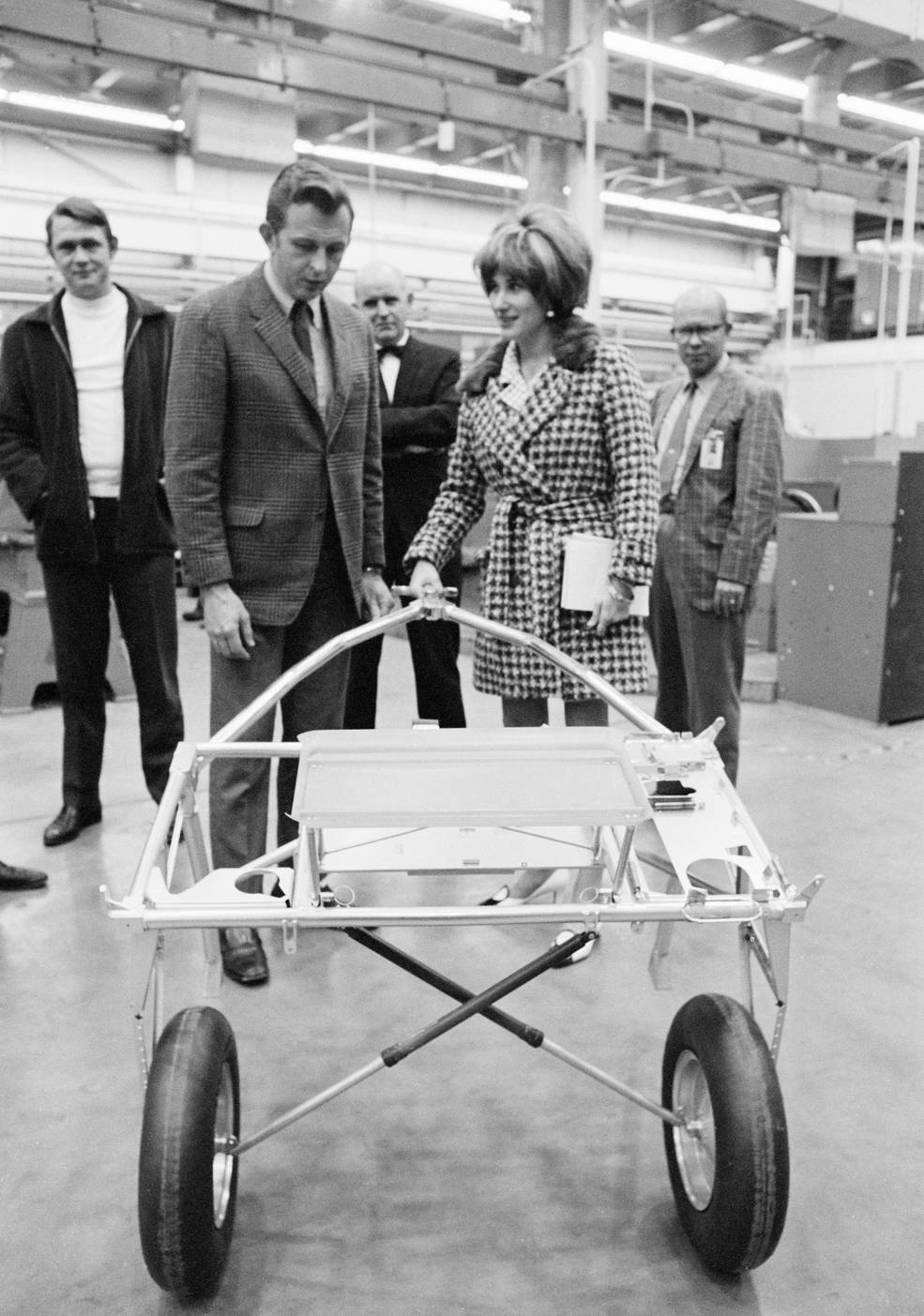
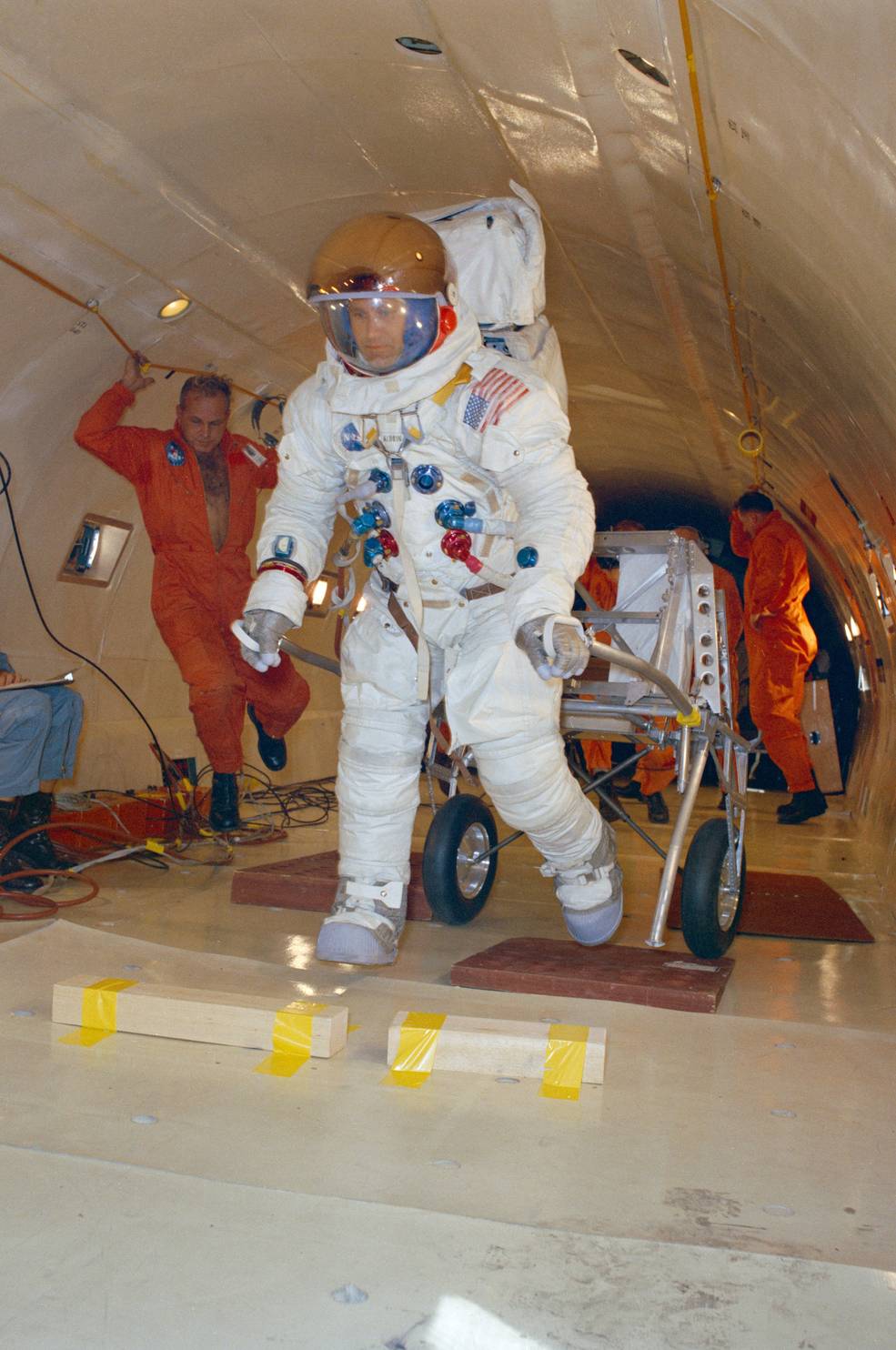
Left: Apollo 14 backup Commander Cernan preparing for a vacuum chamber test in the SESL.
Second from left: Apollo 14 backup LMP Engle during a vacuum chamber test in the SESL.
Second from right: Engineer Creasy (left) and MSC Roundup editor LaMere demonstrate the MET prototype.
Right: Apollo 14 support astronaut Pogue demonstrating the MET during parabolic flight.


























